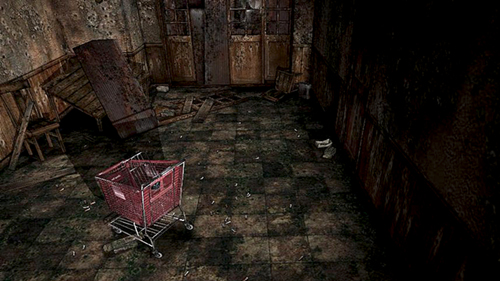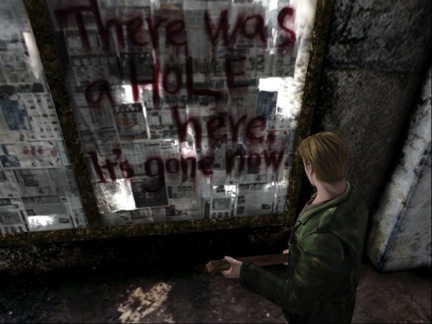An Introduction to J-Horror
In the horror genre, Japanese movies, games, and literature tend to stand out with their unique twist. Over time Japanese horror, or J-Horror, has become notable for its thematic and conventional treatment of the horror genre that sets it apart from western horror. Though there is no true definition of what Japanese horror is, as elements of horror can be found in multiple cultures, there are certain things that can be picked out as being Japanese horror tropes. J-Horror media tends to focus on the psychological aspects of horror and seek to build up a high level of suspense using stories and tropes grounded within Japanese cultural tradition.
Speaking of horror in Japan signify to refer to a set of long standing mythological and literary traditions, deeply rooted in the Japanese imaginary. A wide range of Shinto or Buddhist tropes and motifs, linked to the territory of the arcane, the demonic, the possession, the fantasies, the deaths and the avenging spirits, is part of many works of the Japanese literary and theatrical tradition and constitute a repertory on which cinema will then seize in order to appropriate themes and figures (Picard).
Survival horror games in particular, such as the Fatal Frame and Corpse Party series, can trace their foundational elements back to traditional Japanese ghost stories. However, an approach to Japanese survival horror games that focuses simply on the uniquely Japanese elements of the games would be inappropriate. Because “fear is universal in a way,” a country’s horror media does not necessarily feed off of its own culture in order to create new content (McRoy). Series like Konami’s Silent Hill and Capcom’s Resident Evil both have distinctly western influences, drawing inspiration from western films like The Exorcist and The Evil Dead.
In this article we will be looking at the distinctly western influences found in the Silent Hill games, which focuses on a psychological horror aspect to storytelling and game play, with a main focus on the second game in the series, Silent Hill 2.
The Silent Hill Series
Silent Hill is a survival horror series that currently has ten released titles and an eleventh, which was briefly in production before being cancelled. Each installment in the series follows a protagonist that is “called” to the American town of Silent Hill for varying reasons. Generally these characters are trying to find something or run away from their past, causing them to become trapped in the foggy, lakeside town facing visions of their darkest fears. When creating the series the developers at Konami wanted to make “modern American horror through Japanese eyes” (Picard). With this intention, Japanese psychological horror, seen through the stories heavy psychological elements and monster design, and American horror tropes, such as murders for cult rituals, Indian burial grounds, and underground Civil War prisons, were blended together.
Silent Hill 2 in particular stands out among the Silent Hill series due to its story turning away from the cult plot line that dominated other games towards a deeper psychological aspect. The game follows James Sunderland, a man who goes on a trip to Silent Hill in search of his dead wife. There he meets other individuals who are all looking for something, either safety or a person they lost, though interactions with them are kept to a minimum. As the story unfolds it becomes clear that no one is seeing the same things, and that the town is unique to each individual that enters it, playing heavily on each characters psychology, past experiences, and emotional state. Thus, it plays on the perception of reality, where you can never be certain if events are actually happening.
The horror is one commonly found in Japanese games: subtle, depending ultimately on atmosphere and a sense of horror that slowly creeps up on the player. As someone is playing Silent Hill 2 there may be the confusion as to what the greatest enemy in the game is: the town, the surprisingly human monsters, James, or the player. The ending received is determined entirely on how the player treats James and the other characters in the game. Do they heal James frequently, or let his health remain low? Do they seek to help out other characters, or just allow them to meet their fate? How much does the player care?
The developers sought to show western influence, not simply by playing off of the west’s horror tropes, but by making clear references to American horror films. James, the main character, wears an outfit fairly similar to the main character in Jacob’s Ladder. An important puzzle piece, symbolizing the devil, can be found in an abandoned baby carriage, harkening back to Rosemary’s Baby. Additionally, the bar one of the characters works in, called Heaven’s Night, is strikingly similar to the bar in David Lynch’s Blue Velvet.
 One Silent Hill 2 scene in particular goes beyond just showing western influence, and decides to comment on the American “lifestyle.” Though starting off the game with basic melee weapons, such as a board with nails and a metal pipe, by the second major area the main character obtains a firearm. Going into an apartment, a standard handgun and some ammunition can be found in a bright red shopping cart. If the player chooses to look around the room they can see the walls pockmarked with bullet holes. This display is meant as commentary by the developers on how easy it is to obtain guns in America, and the violence that comes as a result of it.
One Silent Hill 2 scene in particular goes beyond just showing western influence, and decides to comment on the American “lifestyle.” Though starting off the game with basic melee weapons, such as a board with nails and a metal pipe, by the second major area the main character obtains a firearm. Going into an apartment, a standard handgun and some ammunition can be found in a bright red shopping cart. If the player chooses to look around the room they can see the walls pockmarked with bullet holes. This display is meant as commentary by the developers on how easy it is to obtain guns in America, and the violence that comes as a result of it.
By looking at these clear western influences in J-Horror video games it becomes clear fear is cross cultural. Though some elements about J-Horror are uniquely Japanese they cannot be considered outside the influence of other nation’s horror.
Discussion
In this article the Silent Hill and Resident Evil series are mentioned at having western influence. Can you think of any other Japanese horror games that share western elements?
When developing Silent Hill, Konami wanted to make “modern American horror through Japanese eyes.” Is there a case where an American company sought to make modern Japanese horror through western eyes?
Sources
McRoy, Jay. Japanese Horror Cinema. Edinburgh: Edinburgh University Press, 2005. Print.
Picard, Martin. “Haunting Grounds: Transnationality and Intermediality in Japanese Survival Horror Video Games.” Horror Video Games: Essays on the Fusion of Fear and Play. By Bernard Perron. Jefferson, NC: McFarland, 2009. N. pag. Print.


Interesting. I would have liked to see more examples of horror games that don’t draw a lot of influence from Western media.
You say at the end of your article that some elements of J-horror are uniquely Japanese. I’m really curious as to what is considered a unique Japanese fear. I think I understand that the fear of easily accessible guns could be one, but that seems to be a fear that exists in plenty of places. Even in America. Furthermore, I feel like plenty of people, in America at least, have sort of assumed that Silent Hill has always been made for America rather than as a sort of representation of it. So in a way the deeper meaning of it gets lost to us.
Cool article! I don’t know much of anything about Japanese horror because I’m too scared to deal with horror in general, so I don’t know that I can help you with finding more examples. The only horror game I’ve played was Japanese, and it was called Fragile Dreams: Farewell Ruins of the Moon. I’m reminded of this because you said that Japanese horror relies on the player feeling “utterly alone” and the game was entirely about feelings of isolation and loneliness in a post-apocalyptic landscape. Anyway, I can’t say there were any Western influences in the game, but I just thought it was interesting
As far as Western horror being created with Japanese influences, I can really only think of “The Ring”? I know that was based off of a Japanese horror film. Other than that, I know there’s a push towards psychological horror over physical horror nowadays, but I don’t know too much about it because, like I said, I’m way too afraid to actually watch horror films.
This is really interesting. As one of the previous commenters mentioned, I would have also liked to see more specific examples of Japanese horror so that the reader could more accurately understand your arguments. I have zero knowledge what Japanese horror and what differentiates it from Western horror, so this would have been helpful.
Your discussion of typical elements of Japanese horror also stood out to me, especially “the crushing feeling of being utterly alone.” Why do you think this is something that characterizes Japanese horror? Is this a relatively new development or is this a fear that is deeply engrained in their culture?
In regards to your second question, I can think of a couple. The Ring, Dark Water, The Grudge….I haven’t seen enough Japanese (or American) horror to effectively compare and contrast, but these might be worth considering.